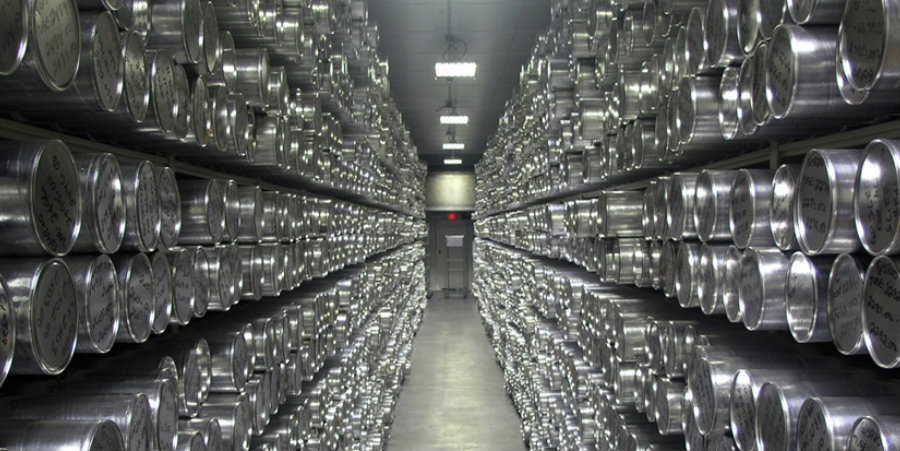The National Ice Core Laboratory has stored around 56 thousand feet of ancient ice to help scientists discover how much CO2 has been circling on Earth. All this information is in the ice samples and researchers work hard to know as much as possible about the planet.
The samples are drilled from Antarctica and Greenland and then, ice samples are taken to the National Ice Core Laboratory in Lakewood, Colorado. The laboratory sent part of the samples to other centers where researchers also studied the ice to look for clues about Earth’s ancient climate. The results would allow scientists to make a comparison between then, and the current atmosphere on the planet. The ice samples are sliced, photographed and tested before going to any lab.

The ice cores are mostly studied to prove theories about Earth’s ancient environment and to help make new predictions about the weather in the present.
To analyze the ice, researchers use the weight of molecules in the ice that can show how high or low was the air temperature at the time the snow fell and became part of the sample. Air trapped in the ice cube can also say how much carbon dioxide and other gasses were part of the atmosphere when the frozen water fell.
Scientists searched for distinctive radioactive atoms that are marks of a solar flare or other cosmic events. Ice cores can also contain dust from other continents that traveled through the air due to atmospheric circulation. Said ice samples can help predict how conditions were for planet Earth almost 800 thousand years ago.
Another data compilation found in the ice samples are volcanic ashes. This particular component found in ice cores can indicate the year the sample was formed. This becomes an essential information to identified the layers that compose the ice sample.

According to researchers, the records in the ice are remarkably precise, and they are compared to tree rings. Ice core has rings, and each of them has different information from different years. Scientists call the samples ice sheets, and they contained all the information about what happen thousands of years
The National Ice Core Laboratory: how it works and how it can preserve millions of ice samples
The pieces brought from the Antarctica and Greenland are stored at 33 degrees Fahrenheit, and they are taken from a depth of 9,800 feet.
The ice cores are put into protective tubes and packed in chilled containers to ship them to refrigerated trucks. Those trucks go to the Colorado Lab, which is funded by the National Science Foundations.
The ice cores going to the National Ice Core Laboratory are stored in a freezer that has a temperature of minus 11 Fahrenheit. The personnel of the Lab pushes the ice samples through a series of trays on metal frame benches and organizes them according to their use for the experiments.
Source: Phys.org
